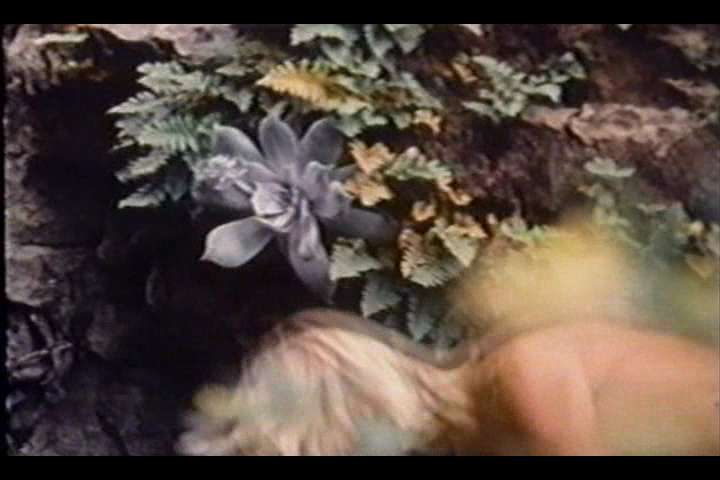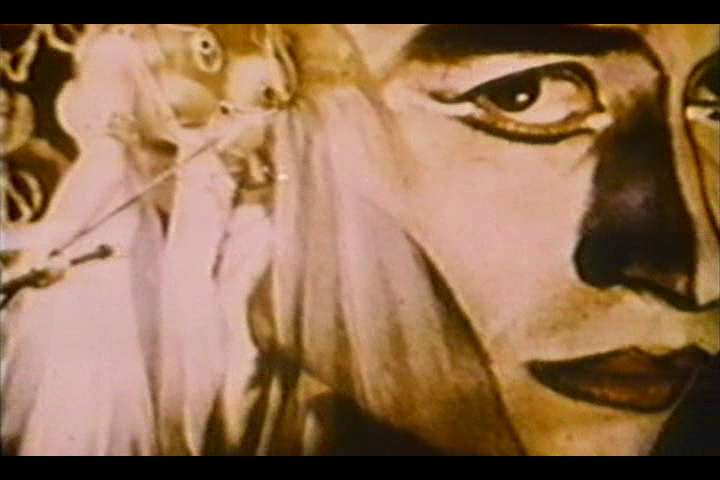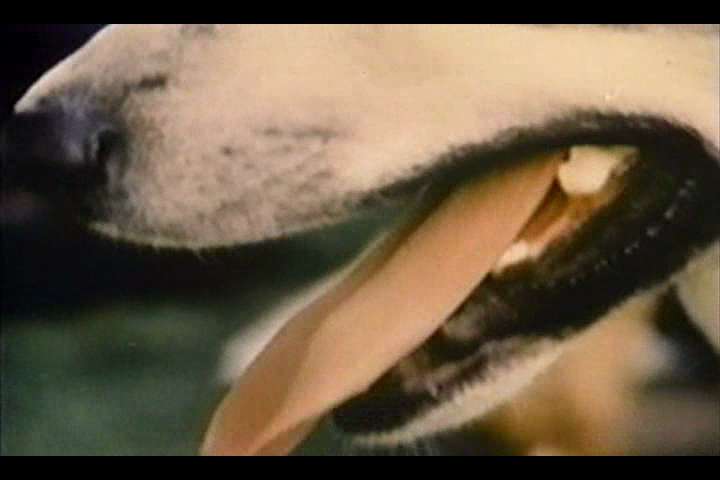![]()
![29f7c043f76a2bde437fd0d52a185152]()
Quote:
The Hedge Theater, USA 1986-90/2002, 19 min
Cast: Robert Beavers, Gregory J. Markopoulos
Beavers shot The Hedge Theatre in Rome in the 1980s. It is an intimate film inspired by the Baroque architecture and stone carvings of Francesco Borromini and St. Martin and the Beggar, a painting by the Sienese painter Il Sassetta. Beavers’ montage contrasts the sensuous softness of winter light with the lush green growth brought by spring rains. Each shot and each source of sound is steeped in meaning and placed within the film’s structure with exacting skill to build a poetic relationship between image and sound. (Susan Oxtoby, Toronto International Film Festival)
![]()
![]()
![]()
![]()
![]()
![]()
Selected parts from P. Adam Sitney’s book Eyes Upside Down.
In contrast to the astonishing rapidity with which Robert Beavers made the apprenticeship films of his first cycle (1968–70) and the four magnificent and mature works of his second cycle (1971–75), it took him another twenty-six years to finish the seven films of the third cycle of My Hand Outstretched to the Winged Distance and Sightless Measure. Of course, this schematic view does not take account of the reediting and new soundtracks he made for all of his early works in the 1990s. Those revisions were integral to the arrangement of the previously autonomous films into the cycles in the first place.
Two central events in the filmmaker’s life frame the production of those concluding seven films and account, in part, for the pace of their production: shortly after completing the first version of Sotiros in 1978, he and Gregory Markopoulos were hit by a bus in Greece. Beavers was severely injured and almost lost his sight in one eye as a consequence of the accident; then, in 1992, Markopoulos died of a lymphoma. It was only after that that Beavers finished a number of films he had shot in the 1980s and revised the rest of his work. The fleeting presence and hovering absence of Markopoulos hedge the elegiac tone that regularly sounds, fades away, and sounds again throughout the cycle, culminating in the final film.
None of the seven films, Sotiros (1976–78/1996), AMOR (1980), Eυψυχι (Efpsychi) (1983/1996), Wingseed (1985), The Hedge Theater (1986–90/2002), The Stoas (1991–97), and The Ground (1993–2001), are longer than a half hour. They were made predominantly in Greece, although there are scenes from Austria, Switzerland, and Italy. Hand gestures play a large role in many of them. Although Beavers ceased to pay homage to great artists of the past, allusions to ancient and baroque theater occur throughout the cycle. The theater eventually forms an imaginary backdrop against which simple acts of production and tidying from everyday life take on meaning: the filmmaker highlights shaving, dressing, cutting, sewing, carting, broom making, measuring, stone cutting, and house building.
Sotiros was condensed to twenty-five minutes from three films: Sotiros Responds (1975), Sotiros (Alone) (1977), and Sotiros in the Elements (1977), although there may be nothing of the last in it. “Sotiros,” one of the Greek epithets for Apollo, means savior, redeemer, healer; it can be a first name in Greece, the equivalent of Salvador. With Markopoulos, Beavers had visited the temple of Apollo Sotiros (or Epikouros) at Bassae when he started the series. (Nearby, Markopoulos selected a site for the Temenos. The major work of Markopoulos’s last fifteen years was the reediting of his entire corpus for screenings in the Temenos; he restructured his work into the twenty-two cycles of Eniaios. It would take more than eighty hours to show the approximately one hundred films that comprise the serial work. Beavers’ reworking of all of his films and arranging into the three cycles of My Hand Outstretched follows the example Markopoulos set with Eniaios, who conceived the Temenos project as soteriological on an analogy to the healing cults of Asclepius.)
The Hedge Theater, the last film in the cycle to be completed, follows Wingseed, presumably because they were shot in that order. Beavers took fifteen years to give the film its ultimate shape. It is the complement of AMOR: they are the two films of the cycle made in Rome and Salzburg, where both use the Heckentheater as an emblem for cinema’s perspectival depth and representation of the natural world. In place of the Piazza San Ignazio, Beavers lovingly records details from two churches built by Francesco Borromini. Even the tailoring motif recurs: where AMOR shows moments of a suit being made, in The Hedge Theater we see a tailor’s hand sewing a buttonhole on a white shirt.
[I recommend not reading the next paragraphs before watching the film for the first time]
The opening montage intercuts details of the church of San Carlo alle Quattro Fontane with bird cages and snares, the sewing of a button, and Beavers operating his camera. The initial parallelism, elaborately unfolded, of Borromini’s church and the woodland rocolo (filmed in Lombardy) for trapping fowl suggests that the church might be a cage to catch the Holy Ghost or, conversely, the Holy Ghost’s snare for human souls. As Leo Steinberg demonstrated, the “S. Carlino” itself is a rigorous iconographic system, “combining octagon-circle-cross-hexagon,” symbolically affirming the multifaceted nature of the Trinity. Beavers absorbed this system into his film and amplified it.
Eventually the polarities of the editing alternate between Borromini’s St. Ivo delle Sapienza (which Steinberg reads as a symbolic representation of the “Domus Sapientiae, the house built by Holy Wisdom”15) and the Salzburg hedge theater covered with snow. The editing stresses dead leaves and two stone lions nearly buried in snow. At that point Beavers intercut a shot of himself with a man’s arm over his shoulder and brief glimpses of Markopopulos’s face, turning the winter vision into a muted elegy for his lover.
Beavers initially planned to complement the fi lm inspired by Borromini with one centered on San Martino e il povero, a panel by Stefano di Giovanni, called Sassetta, in the Collezione Chigi-Saracini, Siena. He fused the two projects when he finally found the appropriate form for The Hedge Theater. The transition from Markopoulos’s gesture of affection to the second part of the film is marked by a sound of fabric ripping as the camera pans up and down Sassetta’s poorly preserved panel of St. Martin of Tours giving half of his cloak to a beggar. Beavers alternates glimpses of the painting with images of the hedge theater, now green, in spring or summer. The film ends with an inundation of rain, which we can hear before we see it.
Although the title simply translates the Heckentheater, where much of it was filmed, it harbors a revealing pun; for Beavers’s films hedge their theatricality with elegant aesthetic decorum. Consider, for instance, his revision of The Painting. By introducing the images of the torn photograph of himself he does not abandon the reticence characteristic of his art, but rather inflects it; for the dramatic incident in which Markopoulos ripped up the image (if, indeed, my inference about the significance of those shots is accurate) remains suppressed. Instead, the ripped image anchors the analogy of the filmmaker to the tortured martyr, whether or not we take account of this speculative cause of the defacement of the photograph. Thus, even when he concretizes the personal allusion, Beavers hedges its theatricality. In his lapidary montage the space of the theater suffices, as if that were what the cinema might genuinely offer us, or him. Even the arm draped over the filmmaker’s shoulder as he films himself in a mirror is a reticent or understated moment. Whatever it meant to him when he filmed it—perhaps an allusion to the end of From the Notebook Of . . . , that sense has changed with the death of his mentor and lover.
The coda of the film, centered on La Sassetta’s panel, becomes a palinode to The Painting, the only other locus in his oeuvre where a two-dimensional work of art plays a central role. Again, he hedges the allusion, teasing the viewer to consider the painting an allegory of Markopoulos and himself and at the same time refusing to confirm so bold, so outlandish a leap. The ripping sound that introduces the meditation on San Martino e il povero can be an auditory amplification of the severing of the red cloak held taught between the beggar, who grips one end of it with both his hands, and St. Martin, holding the other end with his left hand as he uses the long horizontal sword in his right hand to slice the cloak in half. Just as the Flemish painter of the St. Hippolytus triptych represented the martyr stretched tight above the ground just before his limbs parted from his torso, Sassetta captures the moment when the separation is nearly completed, as the beggar and the future bishop of Tours exchange gazes. St. Martin’s horse has turned his head toward the beggar and the cloak, almost as if to see the source of the ripping sound Beavers added to the image.
In the reverberations of that sound, we might imagine the tearing of the photograph from The Painting. But now, from the placement of the Sassetta imagery in The Hedge Theater right after the shot of the gesture of affection, and by the location of the fi7 lm itself in My Hand Outstretched, the trope reverses and expands to represent the moment death tore Markopoulos’s companionship from the filmmaker, without annulling the allusion to the extraordinary generosity of Markopoulos toward Beavers, sharing everything with him, from the beginning of their relationship, and coterminous with the whole of Beavers’s artistic career. Alive as well as in his death, he passed his mantle to Beavers. That phrase comes from the Second Book of Kings, where Elijah’s cloak symbolized his prophetic election. In leaving it behind for Elisha when the chariot of fire bore him to heaven, he passed on his powers (2 Kings 2:11–14). Elisha expressed his grief in a traditional Hebraic manner by tearing his clothes, but he also accepted Elijah’s inheritance with that very gesture. Similarly, the rainfall at the conclusion of the film suggests a hyperbolic metaphor for the tears of mourning and a metonomy of cyclic renewal.
Tearing or ripping is an essential moment in the filmmaking process. The filmmaker tears off a piece of the continuous ribbon of a shot to join it to another piece ripped from a different ribbon of film. Thus the sound of tearing that precedes the first image of La Sassetta’s panel is also a sign of the act that brings together the two films Beavers could not complete after shooting them in 1986 and 1987 until he joined them in 2002, even though there is no auditory similarity between the tearing of cloth and celluloid.
http://nitroflare.com/view/F8F6E7E9B5EC032/Robert.Beavers.The.Hedge.Theater.SMz.avi
https://uploadgig.com/file/download/7aFdbBE01cf50C2d/Robert.Beavers.The.Hedge.Theater.SMz.avi
Language(s):N/A
Subtitles:None










































































































































